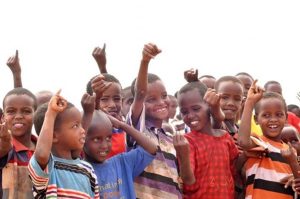Halting Polio in the Horn of Africa
Transmission may be slowing but the outbreak response won’t be

Six months after polio found its way back to the Horn of Africa, the pace of transmission appears to be slowing.
After several rounds of immunization campaigns, the number of cases being reported at the outbreak’s epicentre in Mogadishu, Somalia, has dropped off. At the same time, Kenya has not seen a case in more than four months and Ethiopia has contained the outbreak to the Somali region alone.
That may be little consolation, however, for the more than 200 children across the Horn of Africa whose lives have been changed forever by this devastating disease – and the outbreak is not completely finished yet. There’s no room for complacency with the high risk that polio will continue to spread.
“While we are pleased with the results achieved thus far, we must remain vigilant as there is still a risk that the virus could spread further, not only within the affected countries, but also cross borders into neighbouring countries,” said Steven Allen, UNICEF Regional Director for Eastern and Southern Africa. “Children in this region and elsewhere will not be safe from polio until we reach every unimmunized child.”
Across the Horn of Africa, close to one million children, most of them in Somalia, have never been immunized or have not received the required number of doses. Low immunization coverage was a key factor behind the outbreak, which was also fuelled by frequent population movement and areas of insecurity.
“WHO and UNICEF have supported countries in their response, working closely with health authorities as well as civil society groups to ensure children everywhere can be vaccinated,” said Hamid Jafari, Director, Polio Operations and Research, WHO.
With the outbreak slowing down, the affected countries are now moving into a new phase of polio outbreak response. The priority is to stop the residual transmission in South Central Somalia and in the Somali region of Ethiopia, reduce vulnerability by boosting immunity of populations and increasing immunization coverage, especially in hard-to-reach and inaccessible parts of the region.
In Somalia, in addition to immunization campaigns, strategies have been put in place to reach the most vulnerable children. Around areas affected by insecurity, 284 permanent vaccination posts have been set up at transit points, and vaccines are readily available in health facilities, so that children moving in or out will not miss out on the opportunity of immunization. In Ethiopia, 28 permanent vaccination points have also been set up in border-crossing and large transit points.
UNICEF and WHO require at least $88 million to support governments’ polio eradication efforts in 2014 and maintain the momentum built over the last six months.












